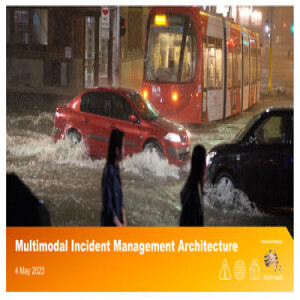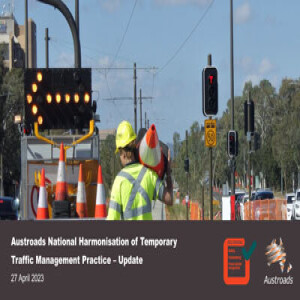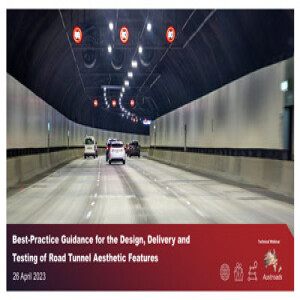Episodes

Tuesday Jun 20, 2023
When the Rider, not the Rubber, Hits the Road
Tuesday Jun 20, 2023
Tuesday Jun 20, 2023
Can motorcycle protective clothing really prevent serious injuries in motorcycle crashes?
Over the past 20 years there have been great advances in the technology of impact and abrasion resistant materials and yet many of the garments currently available will fail under average crash conditions or are too hot to be worn in warm climates. In the absence of effective standards, motorcyclists have had to rely on advertising, brand name or price when buying protective garments.
This webinar traces the research process and evidence that has resulted in the development of an independent testing program to inform consumers as to the performance of currently available motorcycle jackets, pants and gloves. The researchers have also developed a guide for the manufacturers of PPE to ensure their products are fit for purpose.
This webinar describes the mechanisms and limits of motorcyclist’s protective clothing, the prevalence and types of injuries, the limitations of standards, the challenges to manufacturers and road authorities in factoring motorcycle PPE into a safe system.
The webinar is presented by Dr Liz de Rome, the winner of the Women in Road Safety Award presented by Austroads at the 2022 Australasian Road Safety Conference.

Thursday Jun 15, 2023
Learner Approved Motorcycle Scheme Update
Thursday Jun 15, 2023
Thursday Jun 15, 2023
The current learner approved motorcycle scheme (LAMS) was introduced in NSW in 2002 to replace the 250cc engine capacity limit for novice riders (i.e., those on learner and provisional licenses) as race replica 250cc motorcycles were over-represented in fatal and serious injury (FSI) crashes. It was subsequently adopted by VIC, QLD, SA, NT, WA, TAS, and New Zealand, albeit with some amendments in some jurisdictions. A formal review of the LAMS has not been performed since its introduction.
This webinar was presented by Dr Tana Tan and provided an overview of the Austroads project that reviewed the LAMS with the aim of bringing it up to date with the latest research and information and ensuring it provides optimal safety outcomes for novice motorcycle riders.

Wednesday Jun 14, 2023
Motorcycle Rider Perceptive Countermeasures
Wednesday Jun 14, 2023
Wednesday Jun 14, 2023
In this episode, Dr Tana Tan and Dr Mario Mongiardini are joined by Jason MacPherson (who moderates the live Q+A) to provide a detailed overview of the findings of Austroads' recent research report, Motorcycle Rider Perceptive Countermeasures.
Listen, subscribe and head to the Austroads website to find out about how you can register to come to one of our webinars live. Registration is free.

Wednesday Jun 07, 2023
Using the Updated Guide to Road Design Parts 4 and 4A
Wednesday Jun 07, 2023
Wednesday Jun 07, 2023
Austroads’ recent project has updated the Guide to Road Design (AGRD) Part 4 series. This webinar is the second in a four-part series to provide an overview of the project, including the aim, research background, methodology and outcomes.
This session explains how to implement the changes in the AGRD parts 4 and 4A, including pedestrian and railway crossings, horizontal alignment, sight distance, auxiliary lanes, truck acceleration lanes, right turn and left turn treatments.
The webinar is presented by Noel O’Callaghan and Malcolm Mak.

Thursday Jun 01, 2023
Overview of the Changes to the Guide to Road Design Part 4 Series
Thursday Jun 01, 2023
Thursday Jun 01, 2023
Austroads’ recent project has updated the Guide to Road Design (AGRD) Part 4 series. This webinar is the first in a four-part series to provide an overview of the project, including the aim, research background, methodology and outcomes.
The session outlines the new concepts and content that have been included in AGRD parts 4, 4A, 4B, 4C and the Austroads Design Vehicles and Turning Path Templates Guide.
The webinar is presented by Noel O’Callaghan and Malcolm Mak.

Thursday May 25, 2023
Austroads Project Pipeline 2023-24
Thursday May 25, 2023
Thursday May 25, 2023
This webinar is beneficial to consultants who may be interested in tendering for Austroads projects. The session covers new Austroads projects lined up for the 2023-24 financial year, Austroads process around research data collection and what is required to become a successful tenderer.
To find information about Austroads' current tenders, visit the tenders webpage. On that page, you can also subscribe to our Tenders newsletter to receive alerts when a new project is advertised.

Friday May 05, 2023
Multimodal Incident Management Reference Architecture
Friday May 05, 2023
Friday May 05, 2023
Austroads has developed a set of reference architecture models, content and guidance for use by road agencies to identify, plan and improve their multimodal incident management (MMIM) capabilities. MMIM is the resolution of an unplanned incident that negatively impacts, or has the potential to impact, the normal operation of more than one transport mode. MMIM aims to maintain transport services and minimise journey disruptions in day-to-day transport operations. It involves a coordinated response from multiple road and public transport operators to resolve incidents and restore the transport network to normal operating conditions.
The reference architectures presented in this webinar covers two high-priority topic areas identified by Austroads members: Situational Awareness Tool (SAT) and a MMIM system, which are closely related. A SAT is an information system that provides road and public transport network monitoring and incident detection. A MMIM system is an information system that supports the management and resolution of detected incidents with its operational partners across the road and public transport network. Both systems are defined using a series of outputs that describe the required business architecture and information system aspects of each topic. Agencies are expected to adopt and adapt the architectures to suit their existing environments.
The webinar was presented by David Yee and Andrew Somers. There were question and answer opportunities during the session.

Thursday Apr 27, 2023
Austroads National Harmonisation of Temporary Traffic Management Practice – Update
Thursday Apr 27, 2023
Thursday Apr 27, 2023
In this webinar, Chris Koniditsiotis, Lead Implementation Consultant and Patsy Thomas, National Temporary Traffic Management (TTM) Operations Manager provide an update on the implementation and operational commencement of the Austroads National Harmonisation of Temporary Traffic Management Practice including:
- National Training Framework for TTM
- Austroads and jurisdictional adoption
- National Registration Framework for TTM
- Austroads IT Registry system allowing online electronic management of entities, individuals, and qualifications.

Wednesday Apr 26, 2023
Wednesday Apr 26, 2023
Austroads has recently completed a project to identify best-practice guidance for the design, delivery and testing of in-tunnel aesthetic design features, with the aspirations to improve tunnel safety and customer experience.
Through the review of recent tunnel projects, current literature and practices, a definition was developed for in-tunnel aesthetic design features and a best-practice process through which in-tunnel aesthetic design features are designed, delivered, and tested.
This webinar with Warwick Keating and John Birch provides an overview of the findings of this project and the best practice methodology which should be considered when planning, designing, procuring, operating and maintaining in-tunnel aesthetic design features.

Monday Apr 24, 2023
Getting ready for RADS - from Roads Australia’s podcast The Hub
Monday Apr 24, 2023
Monday Apr 24, 2023

